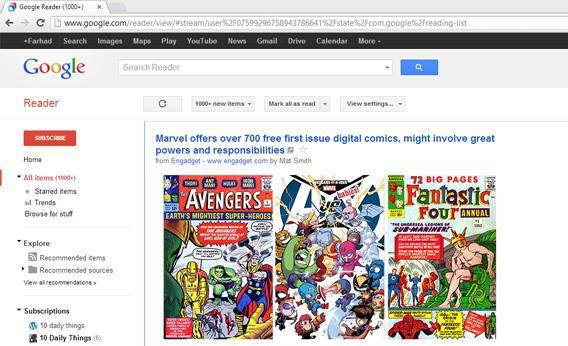


From what I’m seeing, since Google Reader implemented this feature and the search for users functionality, the number of requests for people to follow my public Google Reader shared items feed has gone through the roof. And I like that it’s not right next to the “star” at the top of an item so users have to at least pretend they looked at an article to “like” it. (But again, only in feeds that are popular enough to have many likes to begin with.)

While some people hate the idea of only reading what someone else likes, for popular feeds, it’s actually a somewhat useful filter in determining the most interesting articles. There definitely should be one to turn it off, but there should also be something that lets you sort items in any feed by the number of likes it has. Personally, what I think what the feature needs is more options. And one user has already created a script to do so. They don’t care who liked a story, and want a way to turn the feature off. Anyone know if I can disable or filter?” That seems inline with what many are saying. I don’t want to see Likes from the Unwashed Masses. Says one user on Twitter, “Hating the new “like” feature in Google Reader. A search of “ Google Reader Likes” on Twitter returns results that are nearly evenly mixed between people curious about the feature, and those that wish it would go away. In a world of Twitter, FriendFeed and Facebook, where social sharing is very easy, Google Reader needs to become more social, more alive, if it’s to continue growing.īut quite a few people don’t like the functionality - at all. Certainly, given that “likes” are fully public, we’re seeing much more social activity on feed items than previously with Google Reader’s “share” or “share with note” functionality. If you’re looking at the same data each month and don’t really want to have to keep filtering it out to get the information you need, you can create custom reports and dashboards to access that data.As we expected, the new “like” functionality in Google Reader seems like it’s seeing some good usage. This is a great way to see what’s working and what’s not, and then use the data to make changes to the content or layout on your website. Google Analytics will let you look at the data and slice it up depending on what you want to focus on. It could be which pages are most of your visitors arriving via (landing pages), or it could be page views – or time spent on the page. You can interpret this in many different ways. You can see which pages are performing the best A contact form completion, or sign up would be another way to track conversions on your website.Ĥ. If you’re not tracking conversions, how do you know what is working? This can be as simple as tracking how many sales you’ve made via your shop vs the number of visitors. This report is great as it will break down the overall traffic and let you see how well your different strategies are working for you in one simple report.Ĭonversions are a key metric to track. It will show you how much traffic is landing directly on your website, how much is coming from paid traffic, how much from the organic traffic from your SEO work you have been doing, and how much is coming from social media. This is the Acquisition report on Google Analytics. Where is your traffic coming from “Acquisition”? This is the most basic of things you can do with Google analytics, but also the basis of what all the other data will be pulled from.Ģ. You can measure the traffic to your website. Some of the key things that Google Analytics allows you to do: I’m not going to go into too much detail here because there’s so much information that is available in Google Analytics. Google Analytics will tell you a number of key metrics from your website.


 0 kommentar(er)
0 kommentar(er)
